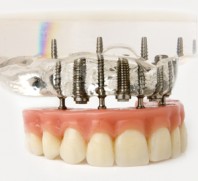- Written by SSI VA
- On Feb 28 2014,
- In Plastic Surgery
Breast Reconstruction: a new beginning after breast cancer

Every year, thousands of women are diagnosed with breast cancer a disease women fear more than any other. It is the most common cancer among women and one of the leading causes of female cancer deaths.
The cancer can be halted, however this may result in the removal of one or both breasts, a procedure known as mastectomy. Unfortunately, some women feel that losing their breasts means losing their femininity, so losing a breast can be a very traumatic experience.
However, breast reconstruction offers a solution to those who want to regain the appearance of a full bosom. Advancements in the procedure have allowed doctors to reconstruct the breast right after mastectomy, so women can wake up without ever having to see a missing breast. Breast reconstruction is not considered cosmetic surgery, rather, reconstructive surgery. Breast reconstruction has become one of the most rewarding surgical procedures available. According to the American Society of Plastic Surgeons, 68,521 breast reconstructions were performed in the United States in 2003.
Benefits of Breast Reconstruction
Here are some of the more common benefits of having
a breast reconstructed.
- Enhanced appearance.
- Restored symmetry to the two breasts.
- Regained a sense of femininity.
- A boost in self-confidence and self-esteem.
Who would best Represent an Ideal Candidate for Breast Reconstruction?
Any woman who faces losing her breasts from breast cancer would be considered a qualified candidate for the procedure. Some women that have a history of breast cancer in theirfamilies sometimes choose to have the breasts removed ( prophylactic mastectomy ) even before the disease shows symptom, in order to avoid cancer completely.
It is also important for women to be healthy when undergoing breast reconstruction. Conditions such as obesity, high blood pressure may result in postponing the reconstructive surgery.
Breast Cancer
Breast cancer is a disease in which cancer cells form in the tissues of the breast. It is not known what actually causes this disease, however age, health history and other factors can affect the risk of developing breast cancer.
It is important for women to check regularly for breast cancer, once a month is recommended. A mastectomy can be avoided if the cancer is diagnosed and treated early.
How is Breast Reconstruction Performed?
Breast reconstruction is usually performed in a hospital, under general anesthesia. This is a major operation that may require more than one procedure.
During the procedure, the affected breast is removed through mastectomy. There are various options to post-mastectomy reconstruction. The following are the two most common forms:
Skin expansion – this is the most common technique. It involves skin expansion, combined with insertion of an implant.
After the breast is removed, a balloon expander is inserted beneath the skin and chest muscle. Saline is injected periodically to gradually fill the expander. Once the breast tissue has been stretched enough, the expander is removed and a more permanent implant can be placed. The nipple and areola are reconstructed in later procedures.
Flap reconstruction – this involves the creation of a skin flap using tissue taken from other parts of the body, like the back, abdomen, or buttocks. This procedure also has its own variations.
In one type of flap reconstruction, the tissue remains attached to its original site, which retains its blood supply. The flap, consisting of the skin, fat, and muscle, are tunneled beneath the skin to the chest. This creates a pocket for the implant or, in some cases, it creates the breast mound itself, in which case, no implant is needed.
Another technique involves using tissue that is surgically removed from the abdomen, thighs, or buttocks, which is then transplanted to the chest by reconnecting the blood vessels, through microsurgical technique, to new ones in that region.
How Much Pain is Associated with Breast Reconstruction?
There is always a considerable amount of pain after surgery, especially in a procedure as extensive as breast reconstruction and mastectomy. You are likely to feel tired and sore for a week or two following surgery. Prescribed medication can control most of the discomfort.
What is the road to recovery like?
It may take up to six weeks to recover from a combined mastectomy and reconstruction. Most scars should fade over time, but they may take one to two years and never fully disappear.
Your surgeon will advise you on when to begin stretching exercises and normal activities. Generally women return to normal activities about three to six weeks following reconstruction.
What are The Long-Term Effects of Breast Reconstruction?
Chances are your reconstructed breast may feel firmer and look rounder or flatter than your natural breast. It may not have the same contour as your own breast, nor will it exactly match your opposite breast.
What Are the Risks and Limitations of Breast Reconstruction?
All surgeries carry risks, including bleeding, fluid collection, excessive scar tissue, or difficulties with anesthesia.
For those who undergo breast reconstruction, the most common complication is capsular contracture, where the scar or capsule around the implant begins to tighten. This can cause the breast to feel hard.
Are there other alternatives?
Immediately after mastectomy, some may choose to wear a breast prosthesis instead of undergoing reconstruction. Some women choose to live the rest of their lives without breasts. The decision to undergo a breast reconstruction is entirely up to the patient.
by SSI VA
Categories
Recent Posts
-

Dental Implants
Dec, 30, 2015
-
General Dental Crowns
Dec, 30, 2015
-
Terms & Conditions
May, 26, 2015
-
Payment & Privacy Terms
May, 26, 2015
-
Dental Surgery
May, 26, 2015
-
Orthopedic & General Surgery:
May, 26, 2015
-
Eye Surgery
May, 26, 2015
-
Plastic Surgery:
May, 26, 2015
-
Site Map
May, 26, 2015
-
Links
May, 26, 2015












Leave a Comment